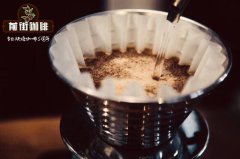Varieties and origin of coffee beans varieties of Kenyan coffee beans are strongly rich in fruit acidity and taste.

Professional coffee knowledge exchange more coffee bean information please follow the coffee workshop (Wechat official account cafe_style)
Qianjie-introduction of Kenyan Coffee varieties
The best coffee in Kenya is not simply divided into AA or AB. They sell to the highest bidder through a specific auction, and fierce competition usually pushes up prices. Kenya's R & D achievements are also unparalleled. Many small-scale agricultural farmers have received higher education and various honors under the guidance of the government. Kenya's quality control process is very meticulous, all aimed at producing a higher level of coffee.
Generally speaking, the coffee produced here tastes bright and bright, gradually intensifying from the front taste to the aftertaste. For people who don't like the acidity of coffee, it may not be suitable (because it contains a series of chlorogenic acids, this kind of coffee is characterized by the acidity of its bright taste). The best Kenyan coffee is mellow and complex, with distinctive fruity aromas (citrus and berry flavors) and sometimes spicy flavors. Some Kenyan coffee is bright and some has a precious wine flavor.
Bourbon Bourbon was first brought to Kenya for planting. In the 1950s, the then agricultural research institution ScottLaboratory selected two excellent hybrids, SL-28 and SL-34, through unremitting efforts, subverting the long-standing prejudice of artificial breeding without excellent natural varieties. SL-28 and SL-34 help Kenyan coffee to form its own unique flavor characteristics and establish a perfect reputation in the coffee industry.
According to botanists in SL laboratory, SL28 and SL34 are genetic variants. Among them, SL28 has a mixed pedigree of French missionaries, mochas and Yemens Tibica. The goal of cultivating SL28 was to mass produce coffee beans with high quality and resistance to diseases and insect pests.
Although the yield of SL28 was not as high as expected the copper leaf color and broad bean-shaped beans have great sweetness balance and complex flavor as well as significant citrus and black plum characteristics. SL34 is similar to SL28 in flavor, with a heavier, fuller and cleaner finish than SL28, except for the complex acidity and great sweetness of the finish. SL34 has French missionaries, bourbon, and more Tibica ancestry. Dou looks similar to SL28, but is more adaptable to sudden heavy rain. It is these two important varieties that lead us to the unique Kenyan style: strong acidity, rich taste and beautiful balance.
Knowledge: Kenya AA, round beans, thick flesh, good heat permeability, high precision, French baking, rich and sweet taste, mellow thickness, good expansibility, aroma and sweetness are top grade.
In short: Qianjie is a coffee research hall, happy to share the knowledge about coffee with you, we share unreservedly just to make more friends fall in love with coffee, and there will be three low-discount coffee activities every month. The reason is that Qianjie wants to make more friends drink the best coffee at the lowest price, which has been Qianjie's tenet for 6 years!
END
Important Notice :
前街咖啡 FrontStreet Coffee has moved to new addredd:
FrontStreet Coffee Address: 315,Donghua East Road,GuangZhou
Tel:020 38364473
- Prev

Coffee flavor describes how to specialize the taste of coffee, how to describe it, and how to describe it is important for taste.
Professional coffee knowledge exchange more coffee bean information please follow the coffee workshop (Wechat official account cafe_style) front street-coffee flavor description of the most famous Arabica coffee and Robsta coffee taste description: Robbosa beans are easier to grow, plants do not need high altitude to thrive. Generally speaking, the purchase price of robusta beans is low, and it is generally used to fill
- Next

How to grow coffee beans? how to grow coffee beans under suitable planting conditions and how to breed excellent flavor?
Professional coffee knowledge exchange more coffee bean information please follow the coffee workshop (Wechat official account cafe_style) front street-coffee bean planting belt Coffee production belt (coffee production zone) is between 25 degrees north latitude to 30 degrees south latitude, including Central, West Africa, Middle East and South Asia, the Pacific, Latin America, the Caribbean many countries. Why is coffee growing?
Related
- Beginners will see the "Coffee pull flower" guide!
- What is the difference between ice blog purified milk and ordinary milk coffee?
- Why is the Philippines the largest producer of crops in Liberia?
- For coffee extraction, should the fine powder be retained?
- How does extracted espresso fill pressed powder? How much strength does it take to press the powder?
- How to make jasmine cold extract coffee? Is the jasmine + latte good?
- Will this little toy really make the coffee taste better? How does Lily Drip affect coffee extraction?
- Will the action of slapping the filter cup also affect coffee extraction?
- What's the difference between powder-to-water ratio and powder-to-liquid ratio?
- What is the Ethiopian local species? What does it have to do with Heirloom native species?

